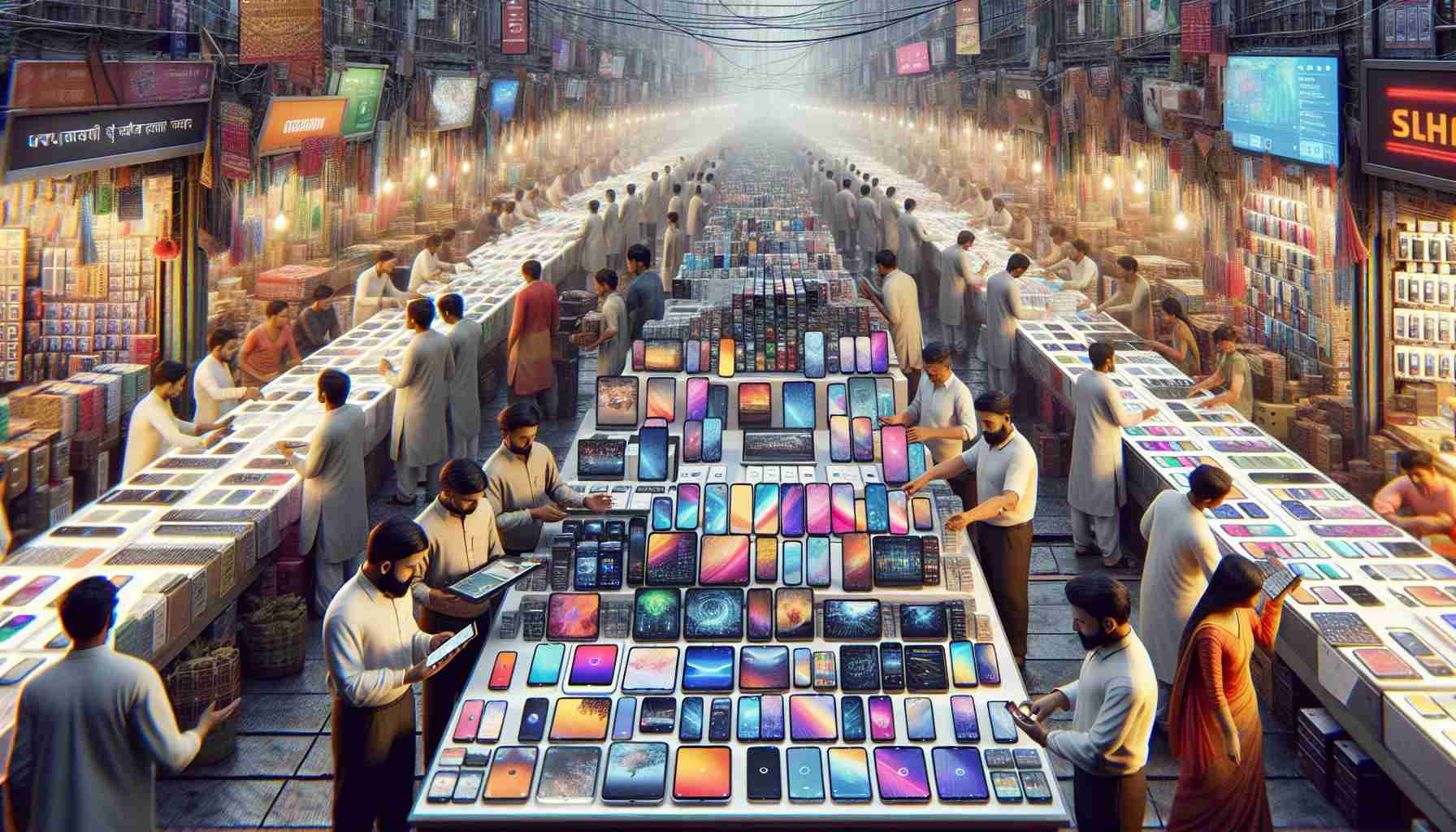Robust Sales Fuel Indian Smartphone Industry
The digital revolution in India has paved the way for a significant jump in smartphone demand, with sales figures revealing an impressive 35.3 million units flying off the shelves in Q1 of 2024. This marks a substantial 15% leap from the corresponding timeframe in the previous year, heralding a new era of tech-savvy consumers.
Market Dominance and Corporate Rivalries
In this fiercely competitive arena, Samsung has emerged as a frontrunner, claiming 19% of the market share attributed to the sale of 6.7 million smartphones. Not far behind are Xiaomi and Vivo, each holding an 18% share, following the successful launches of their respective smartphone lines.
Technological Advancements Redefine Consumerism
Pioneering companies like Motorola and Infinix, along with tech giant Apple with its iPhone 15, are pushing boundaries in the race for innovation. Apple’s strategic pricing approach online has become its trademark, luring in customers eager for cutting-edge technology. As 5G technology beckons, the Indian market stands on the precipice of a digital revolution that could reshape consumer trends and preferences.
Economic and Manufacturing Strategies
Confronted with escalating costs and incentivizing domestic production policies, manufacturers are recalibrating their cost strategies to stay afloat. The rollout of 5G is steering the industry toward a new chapter, viewing the emerging digital economy with equal parts optimism and caution, especially concerning the digital divide.
The Role of Digital Natives in Economic Progress
India’s economic growth is being turbocharged by a young, digitally fluent demographic and a strong middle class with burgeoning purchasing power. The combination of improved internet services, the charm of social media, and supportive government policies is injecting vigor into the smartphone market, despite the hurdles presented by the industry.
A Glimpse into India’s Vibrant Smartphone Landscape
The surge in India’s smartphone industry is being predominantly fueled by several interconnected factors: enhanced internet connectivity, the advent of cost-effective devices, and an ever-expanding middle class whose demand for modern technology is ceaseless. While the bright prognosis for growth glimmers, the industry also grapples with production costs and ensuring equitable digital access amidst the 5G transition.
Important Questions and Answers:
What key factors are driving the growth of India’s smartphone market?
The growth of India’s smartphone market is primarily driven by enhanced internet connectivity, the introduction of cost-effective devices, and a growing middle class with increasing purchasing power.
What are the challenges posed by the rapid expansion of the smartphone market?
Challenges include managing production costs, navigating policy incentives for domestic production, and ensuring equitable digital access during the 5G transition, which is leading to concerns about a digital divide.
Who are the leading players in India’s smartphone market?
Samsung, Xiaomi, and Vivo are leading in market share, with Apple also being a major player due to its innovative offerings and strategic pricing.
Key Challenges and Controversies:
– There’s a continued concern about the digital divide, where certain populations may lag in accessing new technology such as 5G.
– Production and operational costs can be a significant hurdle in maintaining affordable prices for the growing middle-class consumer base.
– Policy implementation and corporate compliance on e-waste management and recycling is an emerging challenge given the fast turnover of devices.
Advantages and Disadvantages:
Advantages:
– The smartphone market in India is creating a robust digital ecosystem that is becoming a catalyst for economic growth and job creation.
– The increased competition among manufacturers leads to innovation and more choices for consumers.
– With smartphones, there is improved access to services like online education, health services, and digital payments, contributing to the digital empowerment of Indian citizens.
Disadvantages:
– The affordability gap might widen, with certain features or technologies remaining out of reach for lower-income groups.
– Increased demand for smartphones fosters a throw-away culture, which could exacerbate the problem of electronic waste.
– The pace of technological advances might make it difficult for regulators to address issues such as data security, privacy, and fair competition.
For additional valid resources related to this topic, relevant links from main domains can be provided:
– Samsung
– Xiaomi
– Vivo
– Apple
Note: The URLs should lead to the main domain of the respective companies mentioned as market leaders in the article. Before accessing any URL, the validity should be confirmed as content on the internet can change.
The source of the article is from the blog tvbzorg.com
